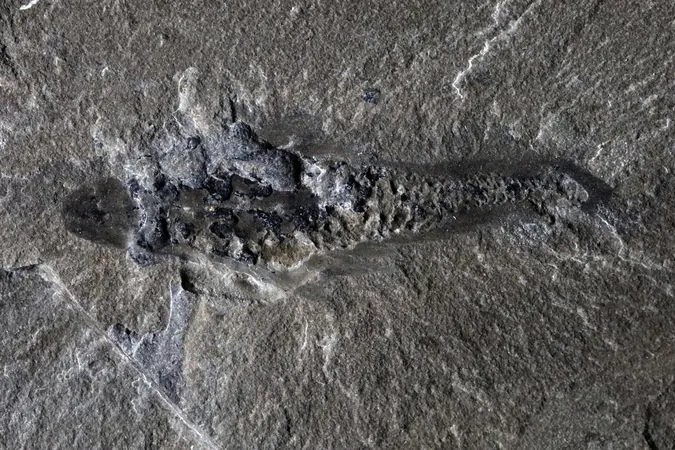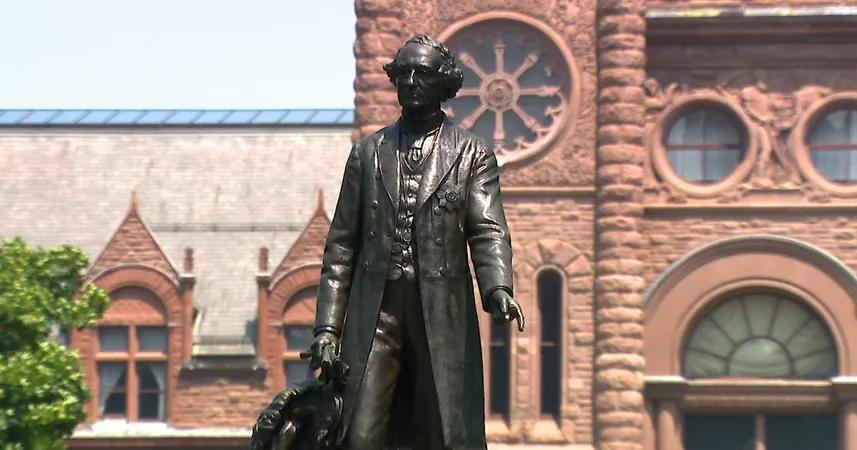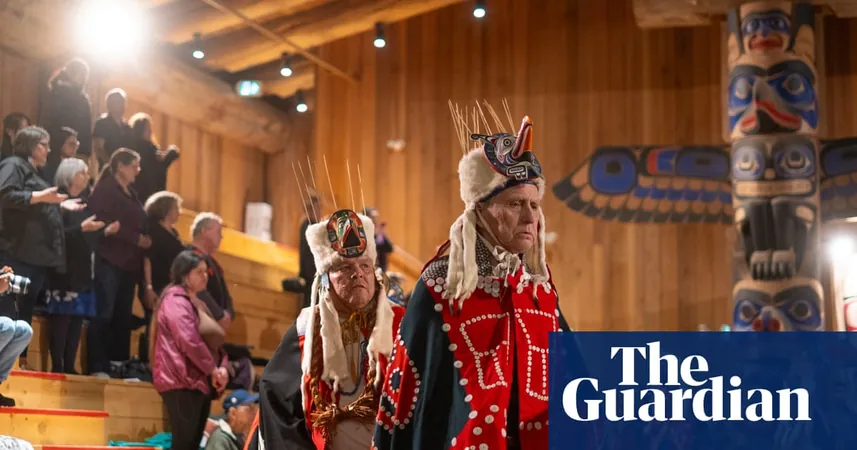
Meet the ‘Sea-Moth’: A 506-Million-Year-Old Fossil Redefining Early Life
2025-05-13
Author: Olivia
Introducing the Unbelievable Mosura fentoni
Prepare to have your mind blown! Scientists have just unveiled a jaw-dropping creature from the Cambrian period that challenges everything we thought we knew about the dawn of animal evolution. Meet Mosura fentoni, a three-eyed predator that sports clawed, flappy limbs and is about the size of your finger, recently unearthed from Canada’s iconic Burgess Shale.
Meet the Living Fossil: The Radiodonts
This alien-like being belongs to a now-extinct group known as radiodonts. You may recognize their famous relative, Anomalocaris, a terrifying sea monster that reached three feet long and was equipped with spiny appendages and a toothy, circular mouth. Both creatures had a similar feeding mechanism and paddle-like limbs perfect for swimming.
Unraveling the Mysteries of Mosura
But it’s Mosura’s unusual features that set it apart. Its tail boasts 16 compact body sections lined with gills, a revelation recently published in *Royal Society Open Science*. "There’s always something new and surprising about radiodonts," said lead researcher Joe Moysiuk from the Manitoba Museum. Its tail segment, unlike anything seen before, has tiny flaps that appear functionally obsolete for propulsion, leaving scientists pondering its purpose.
What’s Behind the Bizarre Anatomy?
Why does Mosura have this peculiar anatomy? Researchers speculate it could be an adaptation to low-oxygen environments in the vibrant Cambrian seas or tied to a highly active lifestyle.
The Sea-Moth: A Nod to Kaiju
With its unique form, complete with broad swimming flaps and a slender body, researchers aptly nicknamed it the ‘sea-moth,’ inspired by Japan’s iconic kaiju, Mothra. But don’t be fooled—Mosura is actually part of a much older lineage of arthropods.
Unlocking Secrets from Half a Billion Years Ago
Beyond its striking appearance, Mosura offers a rare window into the internal anatomy of ancient life. The study of its fossils revealed preserved nerve tissues, eye structures, a digestive system, and even evidence of an open circulatory system, with heart-like qualities pumping blood through the creature’s internal cavities.
Burgess Shale: A Treasure Trove
Most of these 61 remarkable fossils were gathered over the past 50 years by the Royal Ontario Museum in Yoho and Kootenay National Parks, part of the Burgess Shale region. Known for its astonishingly well-preserved soft-bodied organisms, the area was once part of an ancient seafloor.
Moysiuk’s Ongoing Discoveries
Researcher Moysiuk has been busy, previously uncovering other Cambrian wonders like Titanokorys gainesi and the Millennium Falcon-inspired Cambroraster falcatus.
A Blend of Science and Fiction
In a playful twist, Moysiuk mused, “So many sci-fi creatures are inspired by real animals; it’s only fitting scientists draw inspiration back.” He even hinted at potential names from the ‘Tremors’ franchise, since the show’s giant worms are said to be remnants of the Precambrian era—an idea that’s scientifically nonsensical but undeniably fun.
The Future of Science: A Galactic Influence
One thing is clear: as long as astonishing, alien-like creatures continue to be discovered, no sci-fi franchise is safe from incurring new scientific nomenclature. Buckle up, because the exploration of our planet's ancient life is just getting started!









 Brasil (PT)
Brasil (PT)
 Canada (EN)
Canada (EN)
 Chile (ES)
Chile (ES)
 Česko (CS)
Česko (CS)
 대한민국 (KO)
대한민국 (KO)
 España (ES)
España (ES)
 France (FR)
France (FR)
 Hong Kong (EN)
Hong Kong (EN)
 Italia (IT)
Italia (IT)
 日本 (JA)
日本 (JA)
 Magyarország (HU)
Magyarország (HU)
 Norge (NO)
Norge (NO)
 Polska (PL)
Polska (PL)
 Schweiz (DE)
Schweiz (DE)
 Singapore (EN)
Singapore (EN)
 Sverige (SV)
Sverige (SV)
 Suomi (FI)
Suomi (FI)
 Türkiye (TR)
Türkiye (TR)
 الإمارات العربية المتحدة (AR)
الإمارات العربية المتحدة (AR)